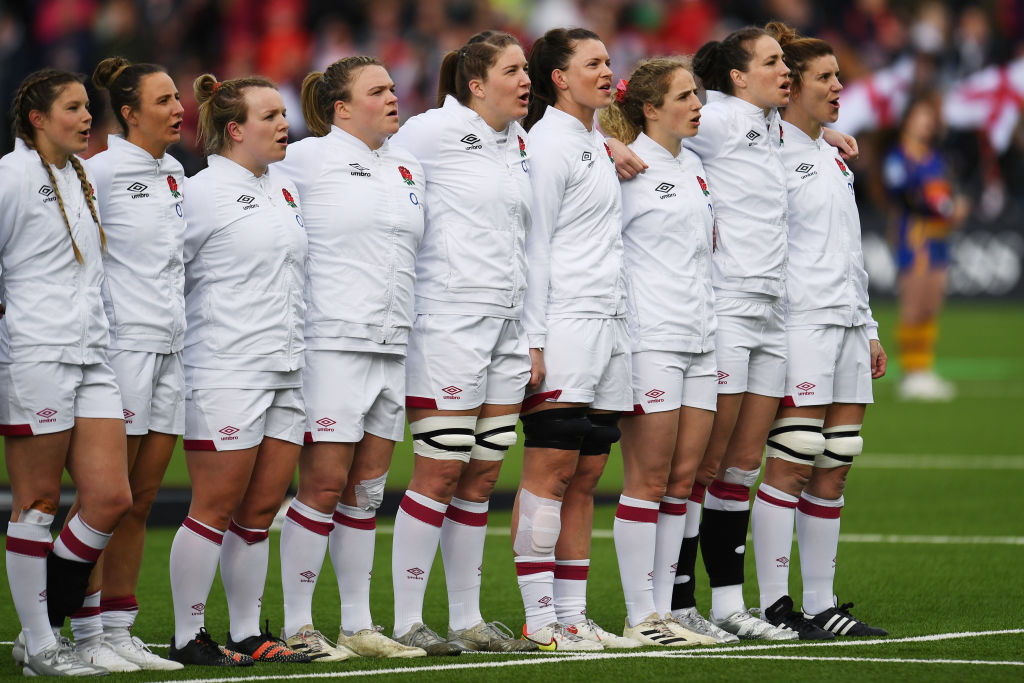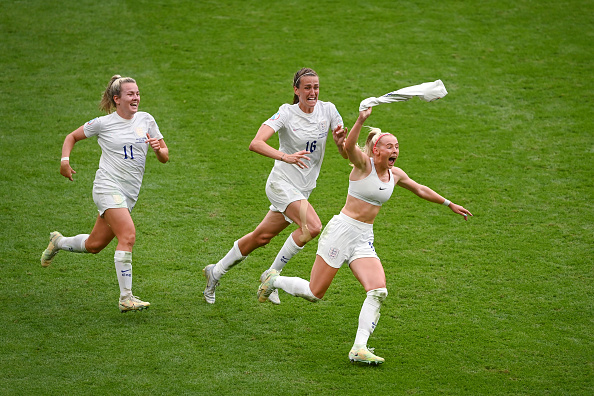Lessons from Lionesses: What English rugby can learn from Euros for 2025 World Cup

The iconic Chloe Kelly goal celebration, the record attendance for a final, success on home soil; England Women’s Euro 2022 victory felt like a watershed moment for women’s sport.
But in a few years’ time England will be doing it all over again. This time, however, it will be with the oval ball.
It was confirmed this year that England would host the next women’s Rugby World Cup in 2025, so what better blueprint can there be than the Lionesses to show the Red Roses just how it can, and should, be done?
“We know that the appetite is there, both from a fan and participation point of view,” the Rugby Football Union’s head of women’s game Alex Teasdale told City A.M.
“The issue that the Euros and tournaments such as the women’s Cricket World Cup in 2017 is helping to unlock is that accessing women’s sport hasn’t been as easy as it should be.
“The broadcast partnerships that have been in place for the Euros and Women’s Super League have allowed so many more people to access women’s sport.”
English rugby has recently signed a deal with the BBC which puts the Women’s Six Nations and some domestic top-flight games from the Premier 15s on terrestrial television.
The women’s World Cup, too, later this year will be on a free-to-air platform.
England are favourites to lift the trophy in New Zealand having racked up a series of impressive results – including a pair of wins over the Black Ferns in the autumn – but they are aware that success now is key to building.
“The Red Roses are on a great winning streak and are working really hard to maintain it,” Teasdale added.
“We have some good momentum as part of our Every Rose strategy to ensure we turn that success into meaningful outcomes. We would love to see that momentum continue and to keep that visibility high.
“There is triangulation between visibility, driving fandom and participation. We need to make sure we’re ready in 2025 for the latter and are planning hard now to make sure we will be.
“We have a responsibility to use the power of sport to further advance societal attitudes towards women’s rugby and sport in general.”
Following their 2-1 extra-time win over Germany last month, the Lionesses wrote an open letter to the UK Government asking for girls to have greater access to football in schools.
Similarly, some believe that grassroots level will be key to the Red Roses making a success out of their World Cup bid.
“The easy thing to say would be: ‘we need more girls playing rugby in schools’,” said Sean Phelan, founder of grassroots rugby organisation Fill Your Boots.
“But that has been an age-old problem for both boys and girls. There just aren’t enough state schools that have rugby pitches.
“However, partnerships between schools and local rugby clubs should be brokered by the RFU to give girls the opportunity to play.
“This can be a win-win for everyone involved. Schools will be able to add girls’ rugby to the curriculum, rugby clubs should see a pipeline of new members and the RFU will see participation numbers grow.”

One criticism the Football Association heard around this year’s Euros was that the stadiums allocated for matches were not big enough in some cases.
While England games frequently sold out, others did not, illustrating the balance that organisers must strike in a sensible and financially sustainable way.
“The key is to get England Women playing in Twickenham now,” specialist women’s rugby journalist Matt Merritt said. “[You’ve got to] build the concept that they are there on merit – this is likely going to happen during the Six Nations.
“Smaller venues in [the World Cup] group stages, such as Exeter’s Sandy Park and Doncaster’s Castle Park, can build up to venues such as Ashton Gate and Welford Road for semi-finals with a Twickenham finale.”
Teasdale agrees. “We have stated we intend to fill Twickenham Stadium during the tournament, which would be game-changing,” she said.
“We’re averaging around 12,000 attendees at the moment, so we have some work to do between now and 2025.
“The venues need to offer a great fan experience which is achieved through full crowds, and we aim to ensure the tournament is accessible to as many people as possible.”
The use of smaller stages should not be seen as a snub to the women’s game either; after all, the men’s Rugby World Cup in 2015 saw stadium capacities range from 90,000 at Wembley to as little as 12,300, a then-smaller Sandy Park.
More than £30m was promised by Whitehall when approaching future women’s projects and Prime Ministerial hopeful Rishi Sunak told City A.M. he remained committed to the cause.
“I’m so proud to be living in a country where my daughters can see women’s sport filling the world’s top stadiums and on prime time television,” he said.
“As Chancellor I supported the bid to host the Womens Rugby World Cup in 2025, and would ensure the bid had the Government’s full support under my leadership as Prime Minister. As the Lionesses showed, a woman’s place is on the pitch.”
Sunak’s Conservative leadership rival Liz Truss’s campaign did not comment when approached by City A.M.
“We want 2025 to leave a lasting imprint on sport,” Teasdale concludes. “Delivering a strong legacy with the backing of the government is crucial.
“We exist to get more women and girls, men and boys playing rugby and both the 2021 Rugby World Cup and 2025 Rugby World Cup play a big part in that.”
Whatever happens with rugby, Women’s Euro 2022 has added to a feeling of change surrounding football. That is something that the lesser played sport needs to target three years out from a showpiece World Cup.